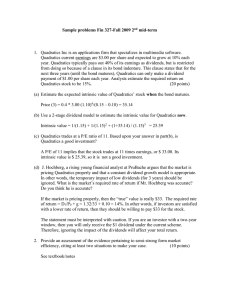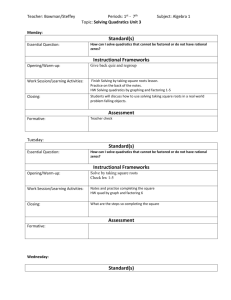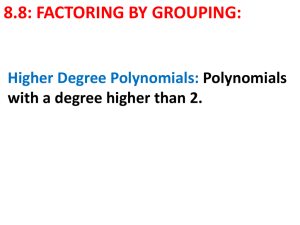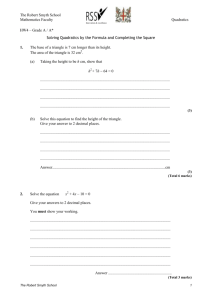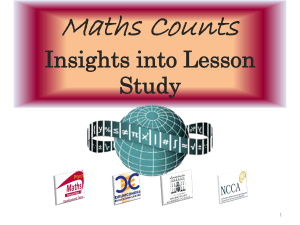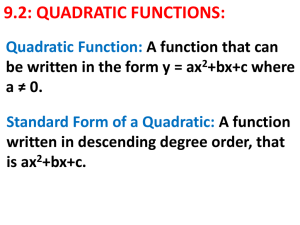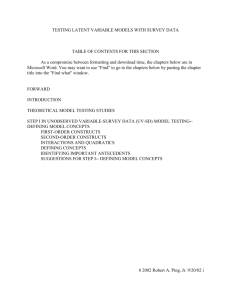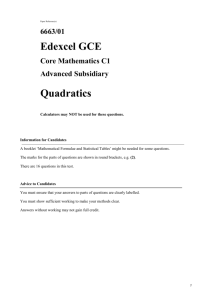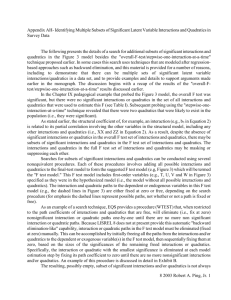here
advertisement
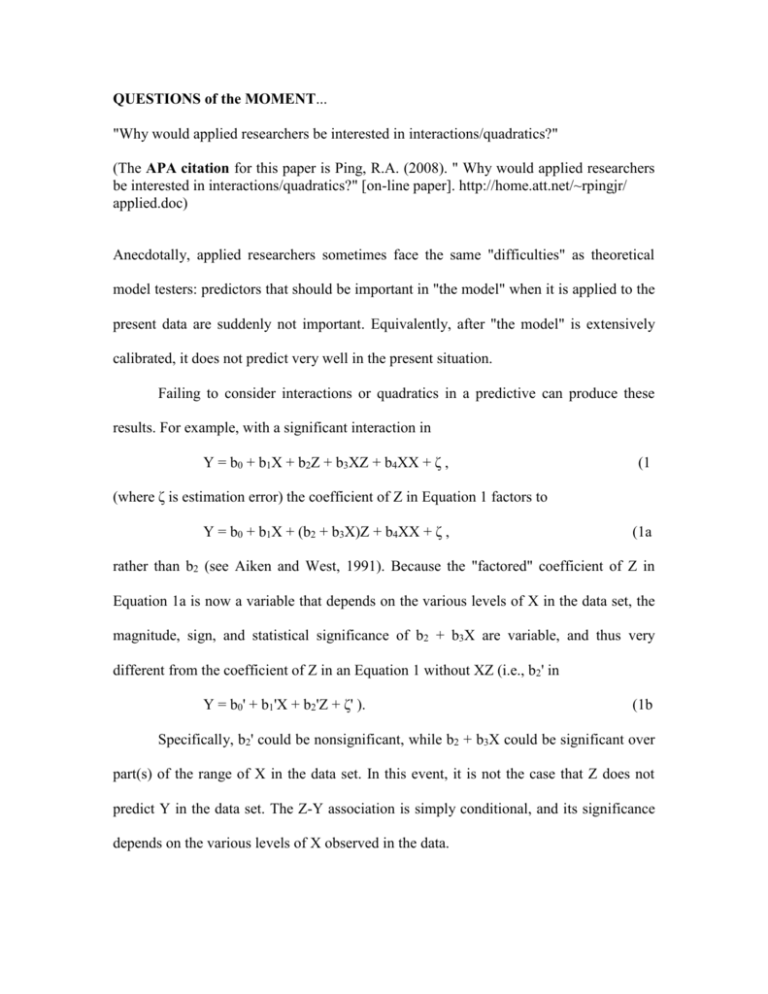
QUESTIONS of the MOMENT... "Why would applied researchers be interested in interactions/quadratics?" (The APA citation for this paper is Ping, R.A. (2008). " Why would applied researchers be interested in interactions/quadratics?" [on-line paper]. http://home.att.net/~rpingjr/ applied.doc) Anecdotally, applied researchers sometimes face the same "difficulties" as theoretical model testers: predictors that should be important in "the model" when it is applied to the present data are suddenly not important. Equivalently, after "the model" is extensively calibrated, it does not predict very well in the present situation. Failing to consider interactions or quadratics in a predictive can produce these results. For example, with a significant interaction in Y = b0 + b1X + b2Z + b3XZ + b4XX + ζ , (1 (where ζ is estimation error) the coefficient of Z in Equation 1 factors to Y = b0 + b1X + (b2 + b3X)Z + b4XX + ζ , (1a rather than b2 (see Aiken and West, 1991). Because the "factored" coefficient of Z in Equation 1a is now a variable that depends on the various levels of X in the data set, the magnitude, sign, and statistical significance of b2 + b3X are variable, and thus very different from the coefficient of Z in an Equation 1 without XZ (i.e., b2' in Y = b0' + b1'X + b2'Z + ζ' ). (1b Specifically, b2' could be nonsignificant, while b2 + b3X could be significant over part(s) of the range of X in the data set. In this event, it is not the case that Z does not predict Y in the data set. The Z-Y association is simply conditional, and its significance depends on the various levels of X observed in the data. This has important implications. Because b2' is approximately the same as b2 + b3Xavg , where Xavg is the average of X in the data set (see Aiken and West, 1991), if Xavg is low (small), b2 + b3Xavg may be numerically small, and thus b2' may be nonsignificant. In different words, Z may appear to be unrelated to Y in an Equation 1b model, when in the Equation 1 model, for larger values of X in the study b2 + b3X may be significant as anticipated. This also implies that with a significant interaction XZ in Equation 1, the ZY association in Equation 1b may be significant in the next data set if Xavg is larger (higher) in that data. Alternatively, with a significant interaction in Equation 1, b2' could be significant, but b2 + b3X could be nonsignificant over part of the range of X in a data set. In this case, the customary interpretation based on the significance of b2', that Z was associated with Y, is incorrect: there is a set of cases where changes in Z had no association with Y. Further, any "recommendations" based on the apparently significant Z-Y association in Equation 1b due to b2' may be misleading. Again, there is a set of cases where "managing" (changes in) Z had no effect on Y. Similarly, with a significant quadratic such as XX in Equation 1, Equation 1 can be refactored into Y = b0 + (b1 + b4X)X + b2Z + b3XZ + ζ , and the coefficient of X is given by b1 + b4X, rather than by b1' in Equation 1b. In this case, the relationship between X and Y depends on the particular level of X at which this association is evaluated. (Interpreting quadratics and "the association between X and Y depending on the particular level of X at which this association is evaluated" is discussed later.) As a result, b1' could be significant while b1 + b4X could be nonsignificant, or vice versa, which creates the same interpretation and implications issues as a significant interaction. Thus, for improved understanding, explanation and prediction of model results, interactions and quadratics should be investigated. Specifically, they may provide explanations for important but nonsignificant associations, which avoids casting a shadow on the utility of the model because it appears not to apply in all cases, and it improves the interpretation of significant associations that may be conditional. However, given the tediousness of identifying significant interactions or quadratics among latent variables, researchers who want to probe for these variables may decide to use approaches such as ordinary least squares (OLS) regression or analyzing subsets of data (e.g., median splits). Unfortunately regression estimates of interaction or quadratic structural coefficients for latent variables are well known to be biased (see the demonstrations in Aiken and West, 1991). Similarly, subset analysis is criticized in the psychometric literature for a variety of reasons, including its reduced ability to detect interactions or quadratics (see Maxwell and Delaney, 1993 and the citations therein). There are other estimation concerns as well, such as correlations among interactions and quadratics that can produce no significant interactions or quadratics when several interactions or quadratics are estimated jointly, and extant search techniques, such as forward selection and backward elimination, can be indeterminate in that they can produce different subsets of significant interactions and/or quadratics. These matters are discussed in the working paper "Hypothesized Associations and Unmodeled Latent Variable Interactions/Quadratics: An F-Test, Lubinski and Humphreys Sets, and Shortcuts Using Reliability Loadings" on the previous web page.

